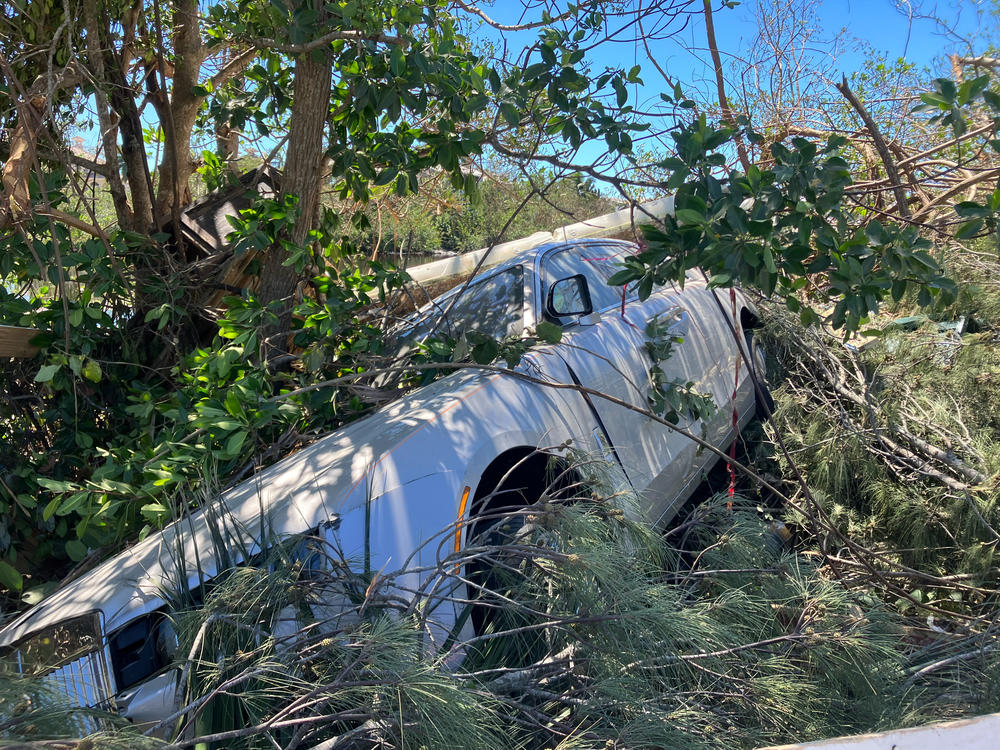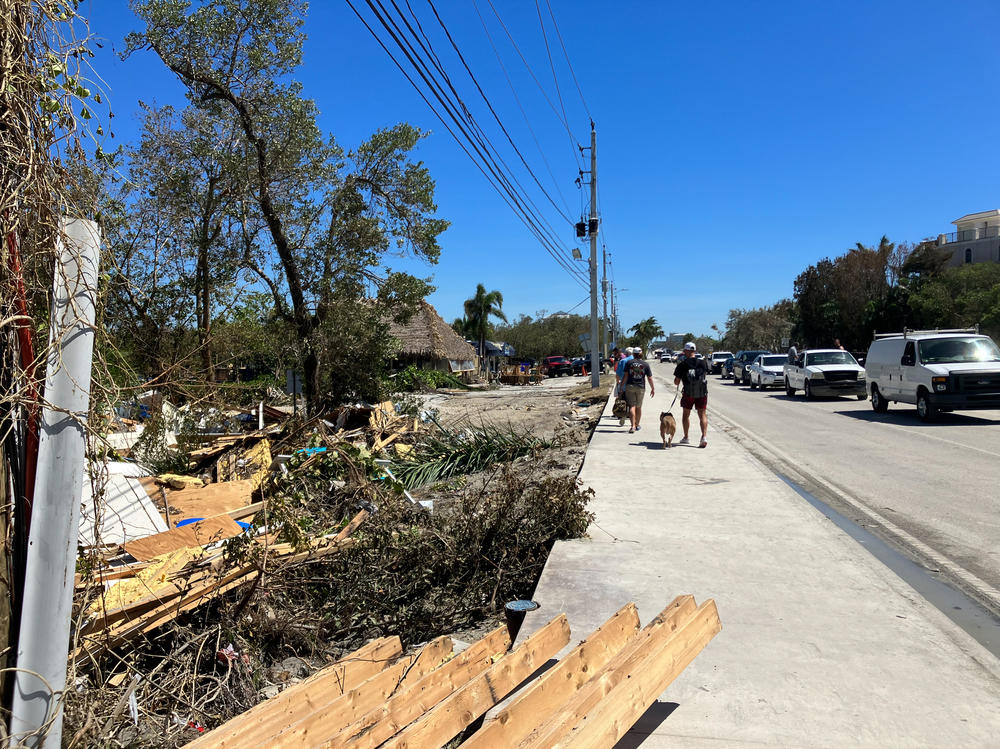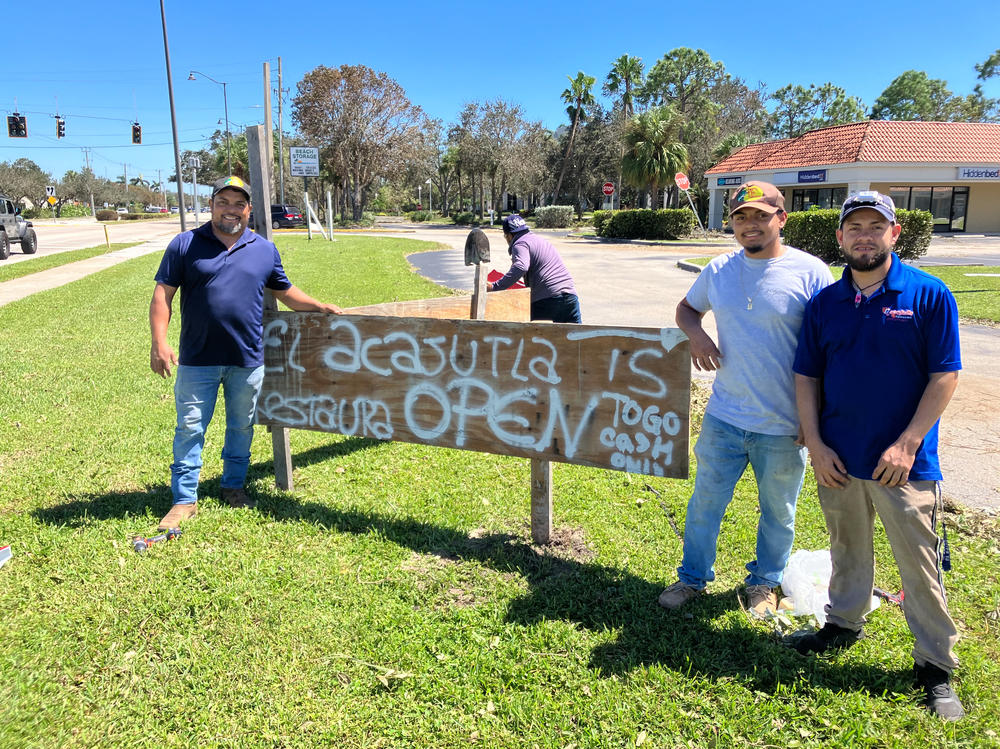Section Branding
Header Content
In the wake of Hurricane Ian's destruction, Floridians are picking up the pieces
Primary Content
BONITA SPRINGS, Fla. — Jim Bianco decided to stay put in his seaside home in Bonita Springs rather than evacuate as Hurricane Ian smashed ashore on Wednesday.
The white-haired 86-year-old has lived in the posh community in Lee County for 30 years. During that time, he's also ridden out, in similar fashion, the 1993 "Storm of the Century" and Hurricane Charley, which made landfall in 2004 at almost the same spot as Ian arrived earlier this week.
Never again, Bianco says. Those storms were "nothing like this," and it was "a big mistake" not to heed authorities who warned people to evacuate, he now admits.
At least 17 people are confirmed dead from the storm and more than 1.5 million people are still without electricity. Despite that, many newer structures — those built after 2002, when the state adopted building codes aimed at fortifying structures against hurricanes — remain intact, with little evidence of damage.
Bianco and his wife were sure their "Category-5 windows" — made to withstand the strongest winds — would give way. Luckily, they didn't. But, "the water came through [and] took everything underneath the house."
His Tesla "floated up to the garage door" and his pool is now filled with sand brought in by the storm surge, he says.
The devastation wrought by Ian along this stretch of Florida's southwest coast is clearly visible, with flattened seaside shops, debris strewn across roads and boats pushed and piled randomly along the shore.
From the air, the larger picture comes into perspective. Some 28 miles north, in hardest-hit Fort Myers, reporter Eileen Kelley of member station WGCU views the destruction from a helicopter. The beach, she says, has "been reduced to rubble" and the water is "horrifying."
"The water is generally green in the summer, and it's black now," she says.
On Barefoot Beach, back in Bonita Springs, boxes of booze and sodden floor mats are being removed at Coconut Jack's Waterfront Grille. Across street, Eric Frederickson from nearby Cape Coral gazes at a Roll Royce driven by Ian into the mangroves.
"What is it they call it? The eye wall? We were right in the middle of that," Frederickson says. It felt "like the house was being sucked into a vacuum cleaner for seven hours straight."
"My friend's family lives here," he says. "We came down to try to help them clean up, but you really can't get in."
Amid all the destructions, there are already signs of resilience, however. About two miles east of the devastation at Barefoot Beach, a strip mall where El Acajutla restaurant is located has no electricity. But thanks to a generator, owner Mario Dominguez, was able to open on Friday for the first time since the storm.
"A lot of people [are] looking for something to eat," Dominguez observes. "We had to take a little, you know, opportunity for it."
He put up a makeshift sign to replace the one swept away by the high winds when Ian made landfall.
"Capitalist spirit," he laughs.
Copyright 2022 NPR. To see more, visit https://www.npr.org.



